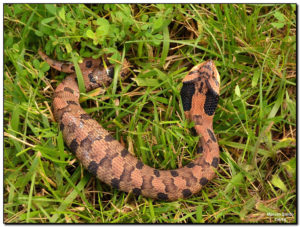Wildlife Wednesday: Turtles Around Houston
While we really only encounter 3 species of turtle here at the Nature Discovery Center, there are actually a number of other species that occur in lakes, ponds, rivers, bayous, swamps, and marshes all over town. We have several freshwater turtles, and only a few species of land turtles. Today we’re going to cover a few species that are not seen in the park, but are easily encountered elsewhere around town. If you’d like to see an article about our 3 species: read here.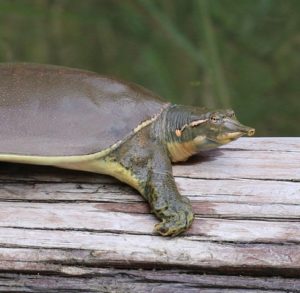
Turtles are reptiles, so like most other reptiles, the following applies. 1. They hatch out of eggs on the land, eggs with shells. 2. They are cold blooded, and so they must move into or out of the sunshine to warm up and cool down. 3. Turtles are covered with scales, made out of keratin. 4. Regardless of how aquatic they may be, they breathe air with lungs, at all times of their lives, outside of the egg. 5. They are vertebrates, with a full bony skeleton.
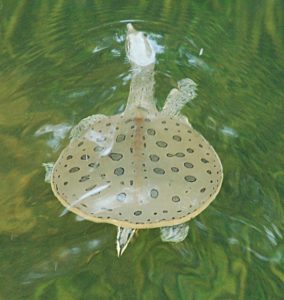
Pallid Spiny Softshell Turtles (Apalone spinifera pallidus, above right and left) often look like large pancakes laying on the sides of lakes and bayous around town. Their flattened shells are made mostly of cartilage, and have rubbery feel, instead of being made of bone, and being hard. The skin of softshells is without scales, and the the skin on the shell if actually rather smooth. The females, which reach the size of a serving platter, are much larger than the males, which only grow as big as a mall dinner plate. They are mainly carnivorous, and have a strong sharp beak inside of the soft rather non-threatening looking mouth. Be aware, these turtles can deliver a severe and painful bite! In some areas, their numbers have gone down from being over hunted for their meat, and disturbance to their freshwater habitats.

A rather herbivorous turtle sometimes found in the Houston area is the Texas Tortoise (Gopherus berlandieri). Texas Tortoises are actually from the Rio Grande Valley of Southern Texas and Northern Mexico, but people often pick them up to keep as pets, and then release them in our area. This is not something that we recommend, as many turtles that are removed from their native habitats and placed into different habitats often perish, before they can adjust. In the wild, Texas Tortoises feed on a wide variety of fruits, flowers, greens, and even the occasional prickly pear cactus pad. It’s the only true tortoise native to the state of Texas, though it has 3 close relatives in North America: Bolson’s Tortoise in Mexico, the Desert Tortoise in the desert SW of the U.S., and the Gopher Tortoise with lives in the extreme SE of the U.S. As with most terrestrial turtles, the males grow larger than the females, which is reversed in most aquatic turtles, with the females growing to a larger size.
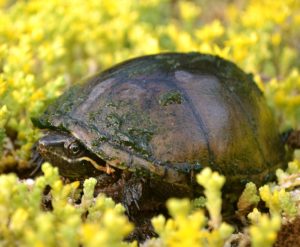
The Stinkpot or Common Musk Turtle (Sternotherus odoratus) is a small, mainly carnivorous turtle that is mainly aquatic, spends most of its time walking on the bottom of its aquatic habitat, rather than swimming through the water column. Though, it is a capable swimmer, when necessary. It is easily recognizable, as its shell resembles a black or dark brown egg (being oval in shape). The stinkpot/musk turtle gets its name from a smelly musk that it can release onto predators and curious humans when seized. Though they eat mainly aquatic invertebrates and smaller vertebrates, they do supplement their diets with algae and aquatic vegetation. They are usually found in still relatively shallow bodies of water with muddy substrates.
Well, we hope you enjoyed a look at a few of the many turtles that you may encounter around Houston. The next time you get a chance, wander down to your local pond or bayou and see which species you can find.
Thanks for joining us, and see you soon!
Eric Duran
Staff Naturalist
photographs: Top – Chicken Turtle by Chris Quinn | Flickr; Softshell Turtles by Tom Benson | Flickr and Don Henise | Flickr; Texas Tortoise by NPS; Common Musk Turtle by Ontley | Wikimedia


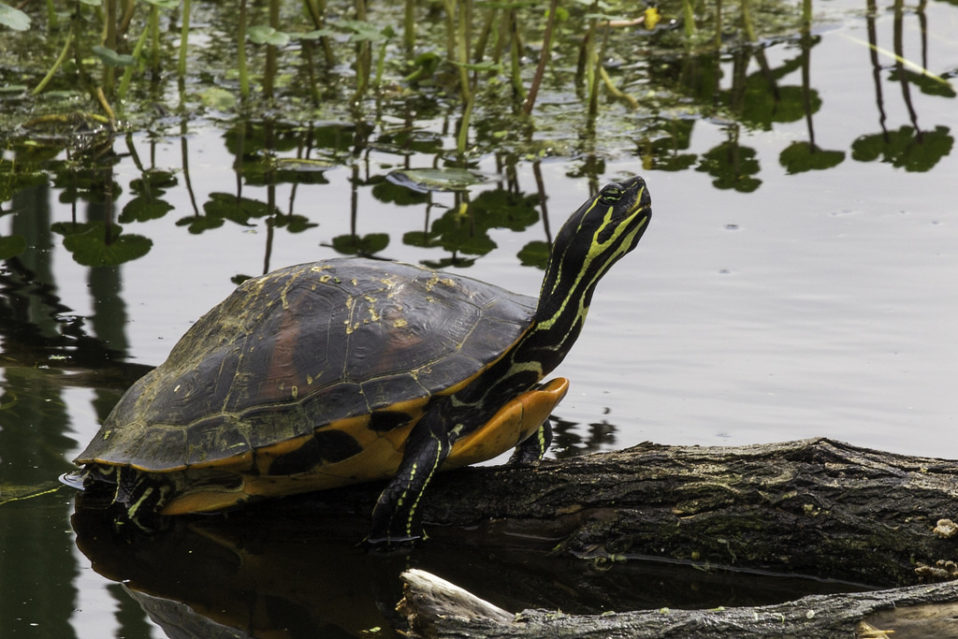
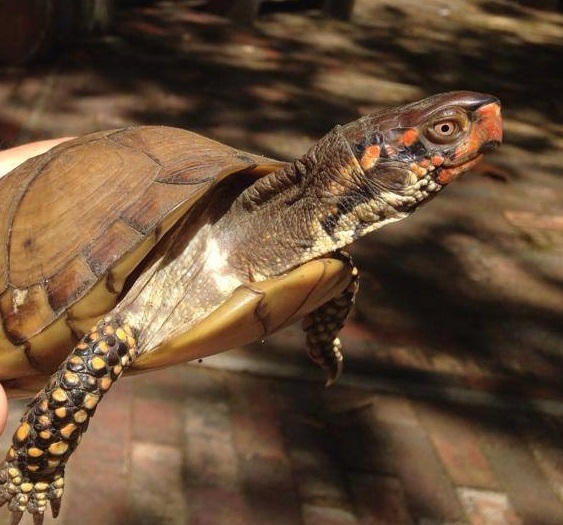
 The Three-toed Box Turtle (Terrapene triunguis) is our most common species of turtle, and is therefore the one you’re most likely to see. As with most box turtle species, they’re terrestrial, and tend to be associated with forested and semi-forested habitats. They are rather omnivorous, feeding on a wide variety of mushrooms, berries, flowers, insects and other small invertebrates. Also like other box turtles, their lower shell (the plastron) is hinged, which allows them to pull inside their shell and then close it up tightly. Three-toed Box Turtles usually have a caramel colored shell, which may have darker markings as well, and the males will will have various colorful markings around the face and legs. Males are larger and have reddish eyes, and the females have yellowish eyes.
The Three-toed Box Turtle (Terrapene triunguis) is our most common species of turtle, and is therefore the one you’re most likely to see. As with most box turtle species, they’re terrestrial, and tend to be associated with forested and semi-forested habitats. They are rather omnivorous, feeding on a wide variety of mushrooms, berries, flowers, insects and other small invertebrates. Also like other box turtles, their lower shell (the plastron) is hinged, which allows them to pull inside their shell and then close it up tightly. Three-toed Box Turtles usually have a caramel colored shell, which may have darker markings as well, and the males will will have various colorful markings around the face and legs. Males are larger and have reddish eyes, and the females have yellowish eyes.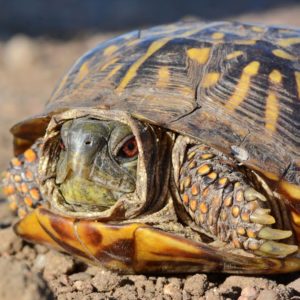
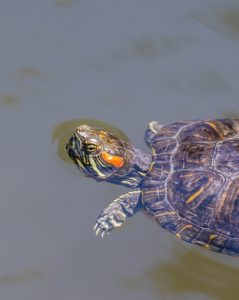 The only species of aquatic turtle that lives in our park is the Red-eared Slider (Trachemys scripta elegans), which is also one of the most commonly encountered aquatic turtles in the Houston area. This is one of the “basking turtles”, aquatic turtles in the family Emydidae that are often seen basking in the sunshine on pond banks, rocks, and logs. Sliders are ominvorous turtles, but start out their lives as primarily carnivorous, and shift to a more plant based diet as they grow older. Despite the name, the red marks on the sides of their heads do not correspond exactly with the location of the ears. While the shells of the juveniles may be elaborately marked with yellow and green lines, the patterns fade away (eventually to black or dark gray), as they mature. Older individuals may even lose all markings and become totally black (a color condition called “advanced melanism”).
The only species of aquatic turtle that lives in our park is the Red-eared Slider (Trachemys scripta elegans), which is also one of the most commonly encountered aquatic turtles in the Houston area. This is one of the “basking turtles”, aquatic turtles in the family Emydidae that are often seen basking in the sunshine on pond banks, rocks, and logs. Sliders are ominvorous turtles, but start out their lives as primarily carnivorous, and shift to a more plant based diet as they grow older. Despite the name, the red marks on the sides of their heads do not correspond exactly with the location of the ears. While the shells of the juveniles may be elaborately marked with yellow and green lines, the patterns fade away (eventually to black or dark gray), as they mature. Older individuals may even lose all markings and become totally black (a color condition called “advanced melanism”).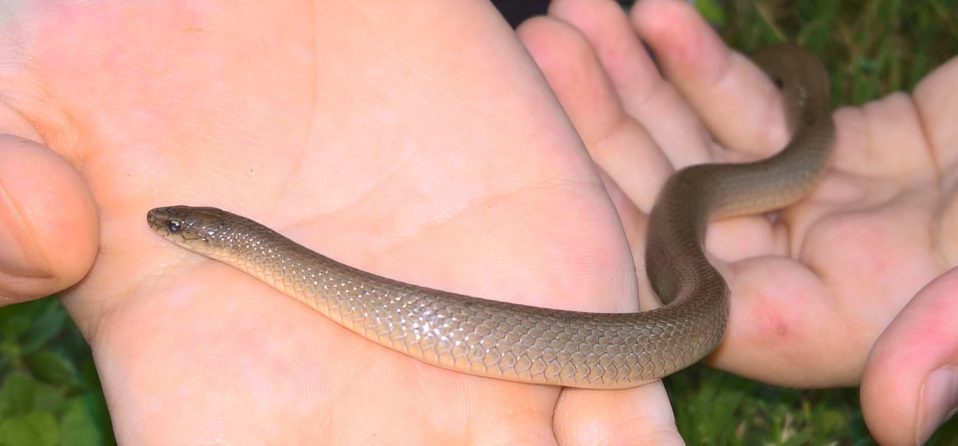
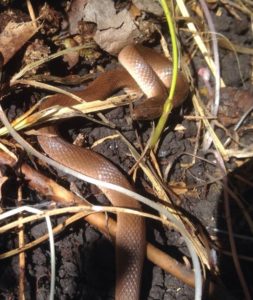
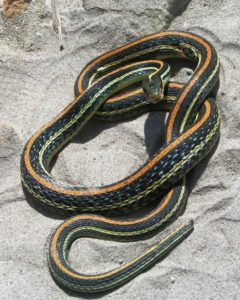
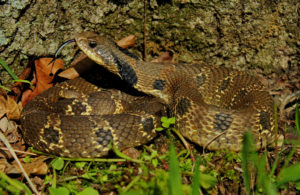 The Eastern Hognose (Heterodon platyrhinos) is one of the few creatures that can eat toads (with their toxic skin). Hognoses are (mildly) rear-fanged venomous, and use those fangs in the rear of their mouths to pop the toads which they eat (toads inflate themselves with air to keep from being swallowed). These snakes are known for spreading their hoods, like a small cobra, and hissing loudly when threatened. If that doesn’t drive away a potential predator, they flip over and play dead (even letting their tongue hang out and emitting a foul death like odor).
The Eastern Hognose (Heterodon platyrhinos) is one of the few creatures that can eat toads (with their toxic skin). Hognoses are (mildly) rear-fanged venomous, and use those fangs in the rear of their mouths to pop the toads which they eat (toads inflate themselves with air to keep from being swallowed). These snakes are known for spreading their hoods, like a small cobra, and hissing loudly when threatened. If that doesn’t drive away a potential predator, they flip over and play dead (even letting their tongue hang out and emitting a foul death like odor).